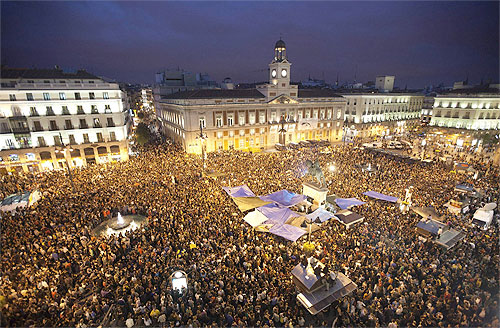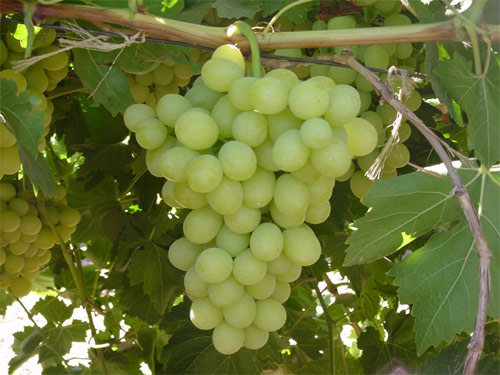
Traditions have always aroused a lot of curiosity in me, because there is always a reason for them, nothing just happens by chance. Every year I celebrate the tradition of the New Year's Eve grapes and many years ago I wondered why they actually did this and nobody really seemed to know, so I decided to investigate…
The short version of the story, which is pretty much common knowledge, is that wine farmers from Alicante and Murcia promoted the tradition in 1909. They were eager to sell on their large surplus of grapes from the incredible harvest they had had that year. However, although this story has some truth to it, the real origin dates back even further.
If we define the tradition of the New Year's Eve grapes as when twelve grapes are eaten in the Puerta del Sol at 12 pm on December 31, which is basically the general understanding, the first written testimony of this goes as far back as January 1897 when the Madrid Press published that in "Madrid it is customary to eat twelve grapes as the clock strikes twelve, separating the outgoing year from the incoming year…" this means that at least in 1896 it was done, and probably many years before that for it to be considered “customary” by the local press.

The plausible explanation for why someone decided it was a good idea to get cold the last night of the year waiting for a clock to strike 12 strokes and choke on a dozen grapes goes back to 1882. That year the mayor of Madrid, José Abascal y Carredano, decided to impose a tax of 5 pesetas for all those who wanted to go out and celebrate the Three Kings on the night of January 5. The purpose of this was not to stop any tradition or start any new ones but to stop the general public from raising hell and getting drunk through the night – this should not be confused with the festive floats and processions which were in the afternoon and open to everyone.
However it did deprive the vast majority of the locals from partying that night, except for those that were well off, of course. This obviously led to the people rebelling and trying to find a way to let off steam so New Year’s Eve became the night of preference for partying and an opportunity to make a mockery of the recent bourgeois traditions imported from France and Germany. The local newspapers frequently published how the upper class now celebrated the New Year by drinking champagne and eating grapes during the New Year’s Eve dinner, so as an act of protest the working class would congregate in the Puerta del Sol and eat grapes as the clock struck twelve.
This behaviour quickly spread and popularised in the capital, to the point that in 1897 the merchants of the city advertised the sale of “Lucky Grapes” and within just a few years it was known as far away as Tenerife. Now, this is when the Levante wine farmers come on the scene, taking advantage of their surplus production in 1909, they carried out a national campaign to embed and enhance the custom throughout the country , and were thus able to sell all their harvest.
 Clearly it worked and today there are few who do not welcome the New Year with 12 grapes in their hand and eat them to the sound of each stroke as it counts down to the New Year. Rare is the Spaniard who will risk poisoning their fate for the coming year by skipping the grapes, many don’t finish them in time and it does take a bit of practise but it is the effort that counts, no effort – no luck, well at least that’s what those who don’t succeed tend to say…
Clearly it worked and today there are few who do not welcome the New Year with 12 grapes in their hand and eat them to the sound of each stroke as it counts down to the New Year. Rare is the Spaniard who will risk poisoning their fate for the coming year by skipping the grapes, many don’t finish them in time and it does take a bit of practise but it is the effort that counts, no effort – no luck, well at least that’s what those who don’t succeed tend to say…
For those who cannot be in the Puerta de Sol, they will follow it on television, normally on La Primera which tops the national audience ratings year after year with around 8 million viewers, some 6 million more than second place. Being such an important occasion some people spend a few extra minutes to remove the seeds or peel the skins off their grapes all in an attempt to improve their chances of swallowing them in time. My best piece of advice is: buy small seedless grapes and you’ll have no problem but they are not easy to come by as the traditional grape variety for New Year's Eve is the Vinalopó from the Valencian Community, the one promoted by the wine farmers back in 1909, so if you can't find seedless try to avoid the large juicy ones or you’ll be in trouble and may well choke your way into the New Year, try and pick the smaller ones and at least remove the seeds…. Good Luck and wishing you all a Happy New Year!